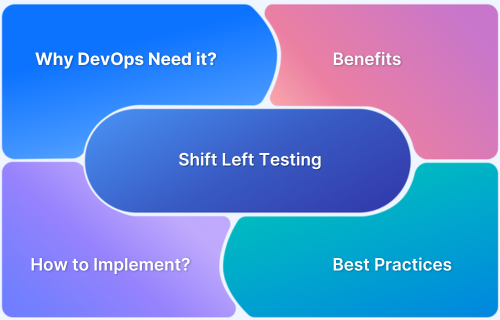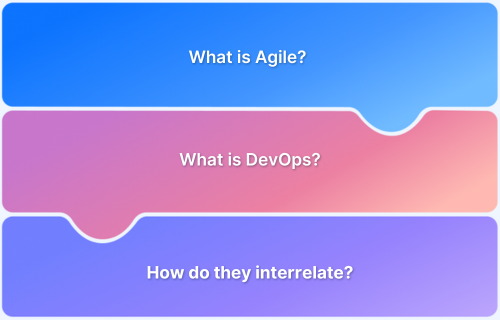Modern IT operations must balance speed, efficiency, and reliability in software development and deployment. As businesses scale, traditional IT (TechOps) can struggle to keep up with rapid release cycles, leading to the adoption of DevOps and NoOps.
Each approach – TechOps, DevOps, and NoOps offers a unique way to manage infrastructure, automation, and workflows. Selecting the right one depends on company size, development complexity, and automation capabilities.
This article breaks down these approaches to help determine which best fits an organization’s needs.
What Is TechOps?
TechOps (Technical Operations) is the traditional IT operations model that manages and maintains infrastructure, networks, and databases. It ensures system stability, security, and minimal downtime through server administration, incident response, and infrastructure upgrades.
Benefits of TechOps
TechOps provides several advantages in maintaining and securing IT infrastructure:
- Stability & Reliability: Ensures consistent system performance and uptime.
- Security & Compliance: Implements robust security measures and regulatory compliance.
- Infrastructure Control: Provides full control over IT systems and configurations.
- Scalability: Supports business growth by managing hardware and software resources efficiently.
Also Read: Breaking Down MLOps vs DevOps
Limitations of TechOps
Despite its strengths, TechOps has some challenges:
- Slow Deployment: Manual processes lead to slower software delivery.
- Limited Collaboration: Development and operations teams often work in silos.
- High Maintenance Overhead: Requires constant monitoring and manual interventions.
- Less Flexibility: Adapting to rapid technological changes can be challenging.
What is DevOps?
DevOps is a collaborative approach that integrates development and operations teams to streamline software delivery. It emphasizes automation, continuous integration, and continuous delivery (CI/CD) to improve deployment speed, efficiency, and reliability.
Benefits of DevOps
DevOps enhances software development and deployment processes in multiple ways:
- Faster Releases: CI/CD pipelines enable rapid software deployment.
- Improved Collaboration: Breaks down silos between development and operations.
- Automation & Efficiency: Reduces manual work with automated testing, monitoring, and deployment.
- Scalability & Flexibility: Supports dynamic infrastructure scaling with cloud and containerized environments.
Read More: Primary Goal of DevOps
Limitations of DevOps
While beneficial, DevOps also has some drawbacks:
- Complex Implementation: Requires cultural and process changes across teams.
- Security Risks: Rapid deployment may lead to vulnerabilities if not managed properly.
- Skill Gaps: Teams need expertise in automation, cloud platforms, and CI/CD tools.
- Tool Overhead: Managing multiple DevOps tools can be resource-intensive.
Must Read: Continuous Delivery vs Continuous Deployment
What is NoOps?
NoOps aims to eliminate the need for manual IT operations by fully automating infrastructure management using cloud services and AI-driven tools. It shifts responsibility to cloud providers, reducing human intervention in deployments and system maintenance.
Benefits of NoOps
NoOps provides several advantages by automating IT operations:
- Full Automation: Eliminates manual infrastructure management tasks.
- Faster Deployments: Enables continuous, hands-off software releases.
- Lower Operational Costs: Reduces IT infrastructure maintenance expenses.
- Scalability: Cloud-based resources scale automatically based on demand.
Limitations of NoOps
Despite its advantages, NoOps presents some challenges:
- Limited Control: Relies on third-party cloud providers for infrastructure management.
- Security Concerns: Automation may introduce new vulnerabilities if not properly monitored.
- High Dependency on Cloud Services: Requires commitment to specific cloud ecosystems.
- Not Suitable for All Workloads: Some applications require manual intervention and custom configurations.
Also Read: Prerequisites for DevOps Engineers
The Roles of TechOps, DevOps and NoOps
TechOps, DevOps, and NoOps have distinct roles and responsibilities in managing IT operations and software development.
The table below provides a clear comparison:
| Approach | Roles & Responsibilities |
|---|---|
| TechOps | – Manages and maintains IT infrastructure, servers, and networks. – Ensures system stability, security, and uptime. – Handles database management, backups, and disaster recovery. – Responds to incidents and resolves IT-related issues. – Implements infrastructure upgrades and optimizations. |
| DevOps | – Bridges development and operations for streamlined software delivery. – Implements CI/CD pipelines for faster deployments. – Automates testing, monitoring, and infrastructure management. – Enhances collaboration between development and IT teams. – Ensures high availability and scalability of applications. |
| NoOps | – Automates infrastructure provisioning, scaling, and monitoring. – Uses AI and serverless computing to manage operations. – Eliminates the need for manual intervention in IT management. – Focuses on reducing operational overhead and increasing efficiency. – Enhances cloud-native application deployment and maintenance. |
Similarities Between TechOps, DevOps, and NoOps
TechOps, DevOps, and NoOps all share a focus on automation, continuous improvement, collaboration, and a customer-centric approach. Have a look:
- All three roles emphasize the importance of automation in improving the speed and efficiency of software delivery. Automation helps to minimize manual errors, reduce the time it takes to complete tasks, and free up resources to focus on more strategic initiatives.
- TechOps, DevOps, and NoOps prioritize continuous improvement and a focus on learning and adapting to new challenges. This includes regular feedback and analysis to identify areas for improvement and a willingness to experiment and try new approaches.
- Although the specific focus and level of collaboration may vary, all three roles rely on collaboration and communication between different teams and stakeholders. This ensures everyone is aligned on goals and working together to achieve the best possible outcomes.
- All three roles ultimately focus on delivering the best possible experience for the end user. Whether it’s through faster delivery times, more reliable systems, or a more seamless user experience, the ultimate goal is to meet the needs and expectations of the customer.
These similarities highlight the importance of a holistic, integrated approach to software delivery and the need for cross-functional teams to work together effectively to achieve success.
Differences TechOps, DevOps, and NoOps
DevOps, TechOp, and NoOps can help your organization to achieve its goals and be successful in different ways. Here’s a detailed comparison table to help you understand the differences.
| Characteristic | TechOps | DevOps | NoOps |
|---|---|---|---|
| Focus | Maintaining technology infrastructure and ensuring stability and availability. | Improving the speed and quality of software delivery through collaboration and automation. | Minimizing or eliminating the need for operations teams, automating the entire software delivery process. |
| Tasks | Server and network administration, database management, and incident response. | Continuous integration, continuous delivery, automation of testing, deployment, and infrastructure management. | Automated management and maintenance of technology infrastructure. |
| Collaboration | Limited collaboration between development and operations. | Close collaboration between development and operations. | Minimal collaboration between development and operations, replaced by automation. |
| Goal | Maintain stability and minimize downtime. | Improve speed and quality of software delivery. | Streamline and automate the software delivery process. |
It’s worth noting that DevOps, TechOps, and NoOps are not mutually exclusive, and many organizations will use a combination of both practices to improve their software development processes.
How TechOps, DevOps, and NoOps Interact and Complement Each Other?
TechOps, DevOps, and NoOps interact and complement each other by working together to achieve a common goal: delivering high-quality software quickly and efficiently.
By leveraging the strengths of each role, organizations can create a holistic, integrated approach to software delivery that balances the need for automation and efficiency with the need for human expertise and judgment.
- TechOps and DevOps teams often work closely together, as the stability and availability of the technology infrastructure are critical to the success of the software delivery process.
- DevOps and NoOps complement each other by working together to automate the entire software delivery process.
- TechOps and NoOps work together to automate the management and maintenance of the technology infrastructure.
But which of the roles should you integrate into your business ecosystem?
TechOps, DevOps, and NoOps – Which One Is Right For You?
The choice between TechOps, DevOps, and NoOps depends on the needs and goals of your organization.
TechOps approach is suitable for organizations that need stability and control over their systems, but can result in slow delivery times. DevOps helps organizations speed up development and deployment while still maintaining control over the infrastructure.
NoOps approach is suitable for organizations that rely on cloud-based services and want to focus on development without worrying about infrastructure management.
In choosing the right model, organizations need to consider factors such as their current infrastructure, the type of applications they are building, their development process, and the level of control they require over their infrastructure.
But what’s the future of TechOps, DevOps, and NoOps?
Read More: Continuous Testing in DevOps
The Future of TechOps, DevOps, and NoOps
The future of TechOps, DevOps, and NoOps will be shaped by the continued evolution of technology and the increasing demands for faster and more efficient software delivery.
TechOps teams will increasingly rely on automation and artificial intelligence to manage and maintain the technology infrastructure. DevOps will continue to play a critical role in enabling organizations to deliver software faster and with higher quality. And NoOps will continue to drive innovation and efficiency in the software delivery process.
As these are dynamic, it is hard to predict the exact form these roles will take, but it is clear that they will play a critical role in enabling organizations to deliver high-quality software quickly and effectively.
Conclusion
While automation and AI continue to transform IT operations, maintaining software quality remains crucial. A balanced strategy that integrates automation with continuous monitoring and testing ensures seamless software delivery while minimizing risks.
But in this process, the continuous testing phase cannot be ignored in your workflows to avoid irregularities in your desired output.
To achieve your desired testing results, you can trust BrowserStack Automate, which helps you get accurate results using 3500+ real devices, browsers, and operating systems. You can access in-built debugging tools to identify and resolve bugs efficiently.






